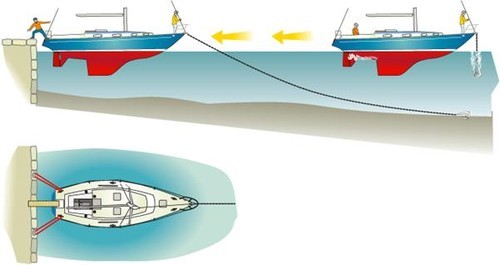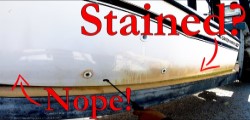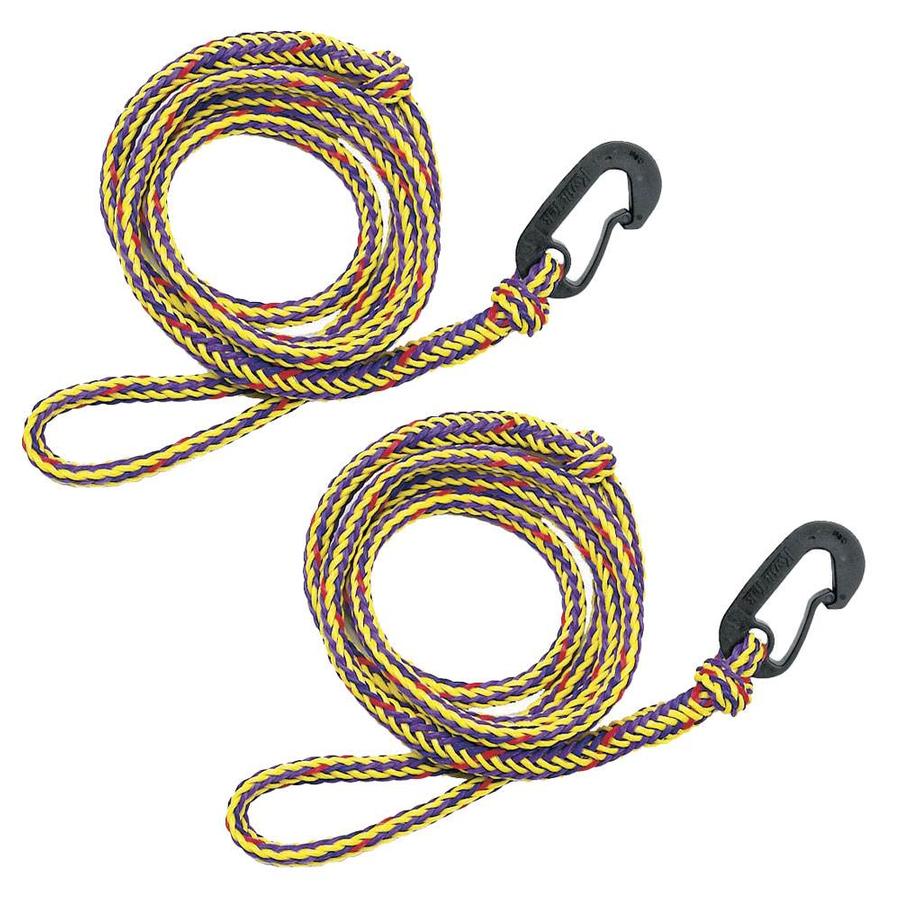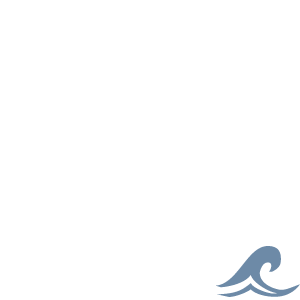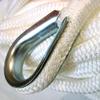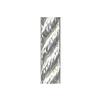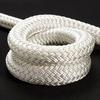What to look for
Dock lines must have a superior combination of strength and stretch:
- For simplicity, nylon is suitable. Both three-strand and braided construction are common. Three-strand nylon stretches more than polyester, is very abrasion- and snag-resistant compared to polypropylene, and is more affordable than high-tech alternatives. Braided nylon is also a great choice, ofering extra strength, has a nice "hand" feel, and often is available in various colours..
- Polyester is typically of higher strength than nylon, but has less stretch. Therefore, polyester rope is unsuitable for dock lines. However, when an external dock snubber - or better, an internal shock absorber - is implemented, you can receive ample stretch with huge strength! The extra strength of polyester will give you piece of mind; if a severe storm suddenly blows in, the polyester is more likely to endure than nylon. In this scenario, the rigid properties of polyester may cause minor damage to your boat's (or dock's) hardware in this case, but possibly far less damage then you would incur having your boat blown onto the rocks if your dock lines fail.
Diameter
Let's keep it simple and talk about nylon rope when determining diameter; we recommend 1/8" of line diameter for every 9' of boat length. Larger lines will wear longer but stretch less - remember, some stretch is good! This takes the load off your boat and reduces "line snap" which can damage your boat and its hardware. See the chart below:
| Boat Length | Up to 27' | 28'-31' | 32'-36' | 37'-45' | 46'-54' | 55'-63' | 64'-72' |
| Dock Line Dia. | 3/8" | 7/16" | 1/2" | 5/8" | 3/4" | 7/8" | 1" |
Length
Transient dock lines should be about 2/3 of the boat’s length when used on the bow and stern. Spring lines should be equal to your boat’s length.
Docking and Mooring Techniques
Ah, the fine art of coming to shore. It can be the icing on a perfect day on the water, or a total catastrophe. Indeed, many of the nicknames and embarassing clubhouse anecdotes happen after particularly memorable docking occaisons. Therefore, it's probably a good idea to brush up on your docking technique and how to tie your dock lines properly.
Below are a few brief examples, but we recommend further reading if you intend to become a pro.
Typical docking techniques c/o the Royal Hamilton Yacht Club:
"A well secured boat will have at least four and preferably six dock lines: 2 bow lines, 2 stern lines and 2 spring lines. As a general rule, the length of bow and stern lines should equal two-thirds of your boat's overall length. Spring lines should be slightly longer, approximately the same length as your boat. Spring lines keep the boat snugly near the dock by preventing it from moving fore or aft, while allowing for the rise and fall of the tide. Keep in mind; the position of cleats on your boat and dock may affect the length of the dockline. Unless your boat is unusually heavy or will be subjected to severe conditions, a bow line, stern line, and two spring lines are recommended. If your permanent slip has outboard pilings or a moor as well, you will need an additional bow and/or stern line."
To learn more, consider visiting the RHYC's site.
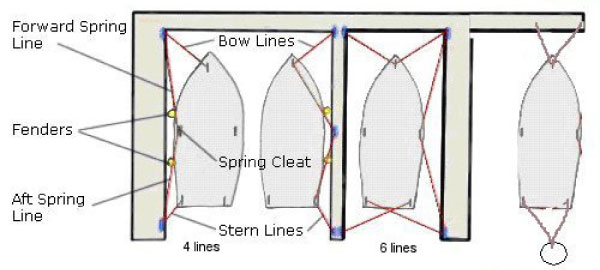
Mediterranean Mooring c/o Sail-World.com:
"Step 1, lower the anchor, well out and then drop back to the dock on a longish warp. If "lazy lines" are supplied, definitely use them instead of an anchor - check other boat's systems before deploying your anchor. After dropping back to the dock, secure the quarter lines. Step 2, adjust all lines so that you are the required distance from the dock."
Note from Clive: When preparing to Med Moor, remember to have your stern lines ready to go - cleated to your boat and handy to be thrown or taken ashore by the helmsman - especially if there are only two people aboard. However, since no one will be paying much attention to the stern lines while backing up, be careful that the stern lines can't fall overboard and wrap around the prop during this critical stage!
To learn more about this technique, you can view Sail-World's site.
